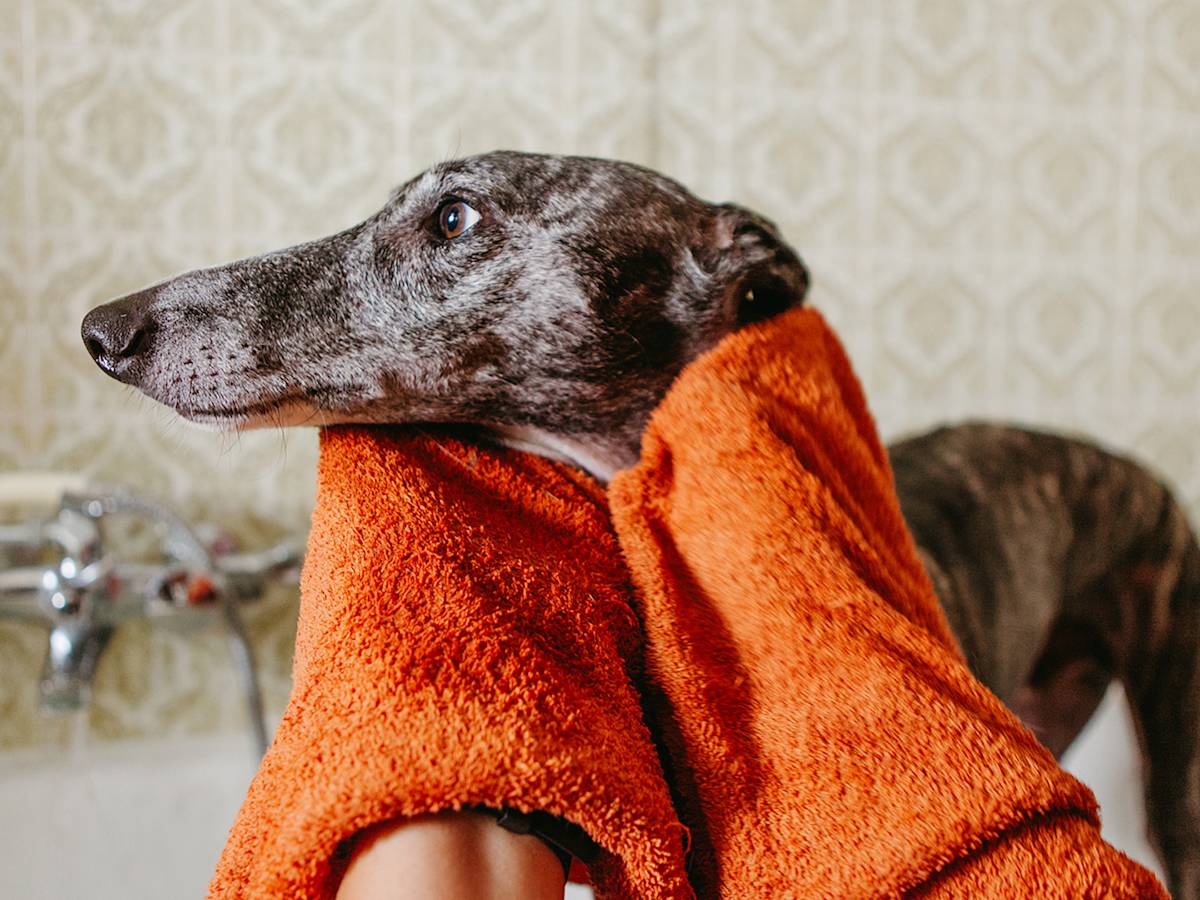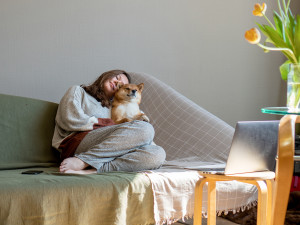Lather, Rinse, Repeat: The Ultimate Dog Grooming Guide
Keep your dog well-groomed but trust trims to the pros.

Share Article
In Christopher Guest’s 2000 mockumentary Best in Show, competition is fierce between Beatrice, Hubert, Rhapsody in White, and other prized pets vying for the top dog title in a pageant. It’s a pretty hilarious spoof on dog shows, but the respect these well-groomed dogs command, well, that is no joke. Indeed, if you want your pup to hold sway among their dog park peers, they need great hair. But keeping your dog so fresh and so clean has health benefits too. Trimming an unkempt coat will reduce shedding, prevent fur from matting, limit allergens, and make it easier for you to spot skin issues. We caught up with a couple of groomers to break down what primping you can DIY versus what you should trust to the pros. (We also watched very many dog grooming videos — for the purpose of reporting back to you, of course.)
DIY wash and dry
If you have a short-haired dog or frequent trips to the salon is out of your budget, you can probably handle upkeep at home: baths, brushings, nail trims, and ear cleans. You’ll need a brush that will remove an undercoat without irritating their skin, shampoo that suits their coat (i.e. an oatmeal-based formula can be calming for sensitive skin), paw wipes for in between baths to remove allergens (ideally fragrance-free), and nail clippers or an electric grinder. Then, should you also decide to attempt some dental care, you’ll need a toothbrush and toothpaste.
Most dogs tolerate bath time, but if just getting yours into the tub is a struggle, try enticing them with treats or smear peanut butter on the side of the tub to distract them. Before you sit your dog down for a mani/pedi, though, we highly recommend watching a demo on Youtube. With clippers, you could accidentally cut the quick. The wha? The quick is a nerve that can bleed incessantly if cut (not to mention, it hurts). It’s typically visible in white/clear nails but you’ll be a blind barber if your dog has black nails. If that’s the case, we recommend a file or grinder (start slow with the latter because the motor noise scares some pups).
Leave it to the pros
If you’ve successfully quarantine-cut your own bangs (bravo), then you can proceed with caution with taking a trimmer to your dog. What’s the worst that could happen? Well, a lot, and we’ll spare you the gory details. So, if you can swing it, best let the pros handle the trimming and shearing, especially in sensitive areas such as around their eyes, ears, and muzzle. Long-haired and/or outdoorsy dogs should have haircuts on the regular. “Your dog’s coat can pick up things like a dust mop,” says groomer Laura Gamarro. “Especially the doodle set. Their hair grows twice as fast as any other dog, and their fur has many different textures — it’s very unpredictable, stringy, curly, and super dense.”

The service menu at many grooming salons may look familiar: haircut, blow dry, manicure… Figuring out what to treat your dog to depends on their breed (and your style). Does your pup travel in a designer tote, paws never touching the ground, or do they gleefully roll around in the most malodorous things they can sniff out? If the latter, you may want to consider a full shave. As for costs, a spa day is going to cost more for a Great Pyrenees than a Shih Tzu (from $25-100+). Before your dog struts out the door, swank salons will spritz them with cologne and give them a bandana to don.
Picking a groomer
You would never trust just anyone armed with a pair of scissors to cut your own hair, so make sure your dog is in expert hands as well. We’ve heard some horror stories about dogs suffering injuries, infections, and even dying at some big-box pet store chains that offer grooming services. When screening salons, ask the following questions:
Is the groomer certified and a member of a major grooming association?
Does the groomer show concern for your dog’s health and behavioral issues?
Does the salon require confirmation that your dog is up-to-date on their vaccinations?
Is the salon clean, tidy, and organized (pee and poop smells should be deal breakers)?
Can you tour the salon before your dog’s appointment and watch a grooming procedure?
Does the salon have experience grooming your dog’s specific breed and personality?
Once you’ve got an appointment, there are a few things you can do to prepare. Walk your dog ahead of time to not only let them ‘go’ before they get all cleaned up, but also to tire them out so they won’t be anxious. Also avoid feeding them right before. Bring a copy of their current vaccination record with you and explain any health or behavioral issues your pup may have to the groomer. For example, brachycephalic breeds like bulldogs and Boston terriers should be carefully monitored under the dryer because they have breathing problems. An experienced groomer will know that but won’t know if your dog is exceptionally timid or skittish (or can get snappy and should be muzzled when the clippers come out).
Last but not least, remember to note not only how your pet looks, but acts too, when you pick them up (are they their happy selves or do they seem traumatized by the experience)? If your dog is comfortable with a particular groomer at the salon, be loyal to them (as you would your own stylist) so they’re a familiar face to your dog. And if not, “if your dog doesn’t like to get groomed, it’s probably time to look for another groomer,” says Linda Easton, director of International Professional Groomers. “It’s a spa treatment and should feel good — they’re getting a warm back and a full body massage! And, of course, they should look nice when they come out.”

Katherine Tolford
Katherine Tolford writes about the pet industry and veterinary medicine. Her work, which has appeared on PetMD, Chewy, and Floof, has helped pet parents better understand their pets’ health. She’s also a pet parent to Milo, a loud-mouthed tuxedo cat, who likes to attempt backwards somersaults on the couch.


